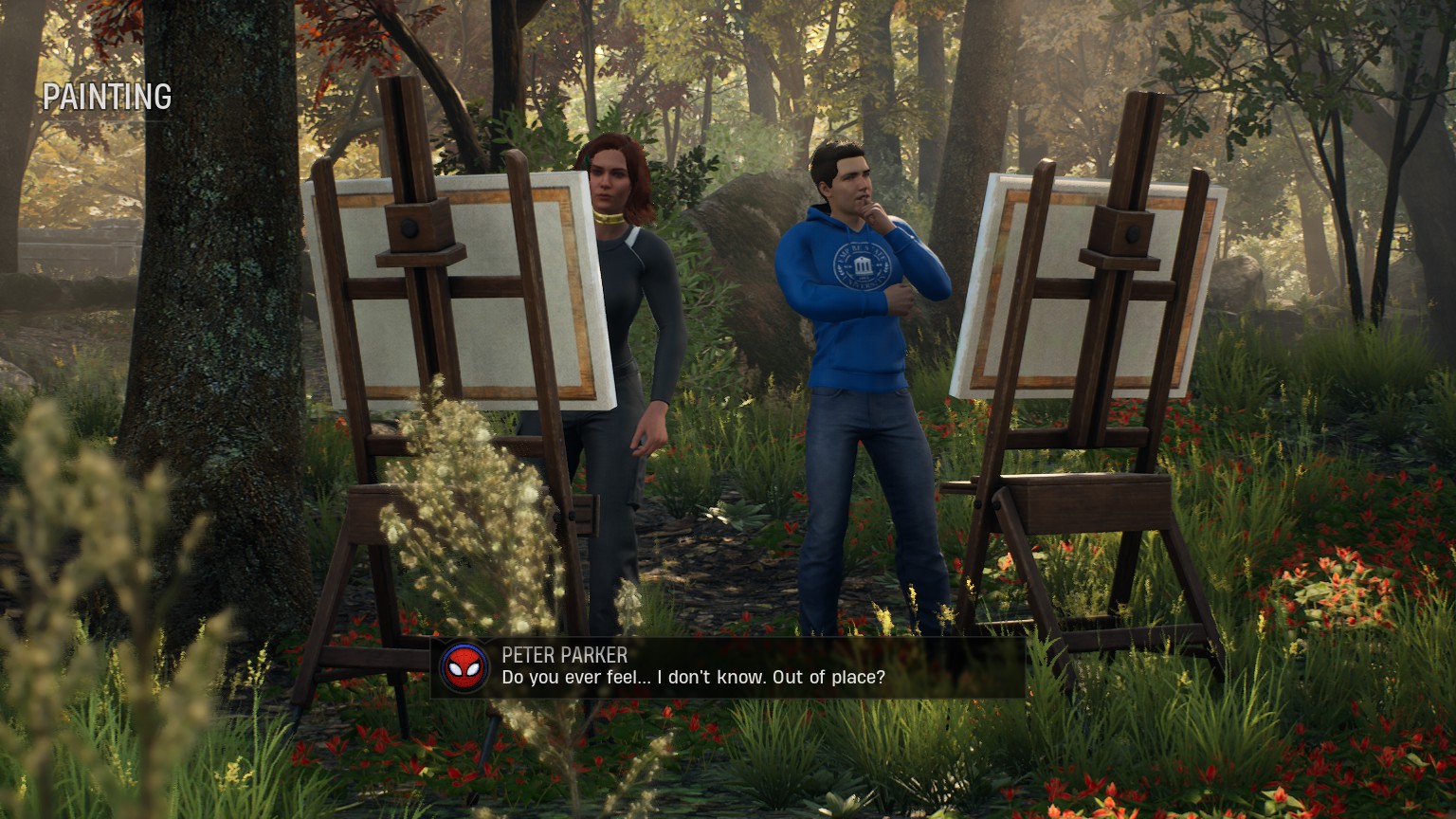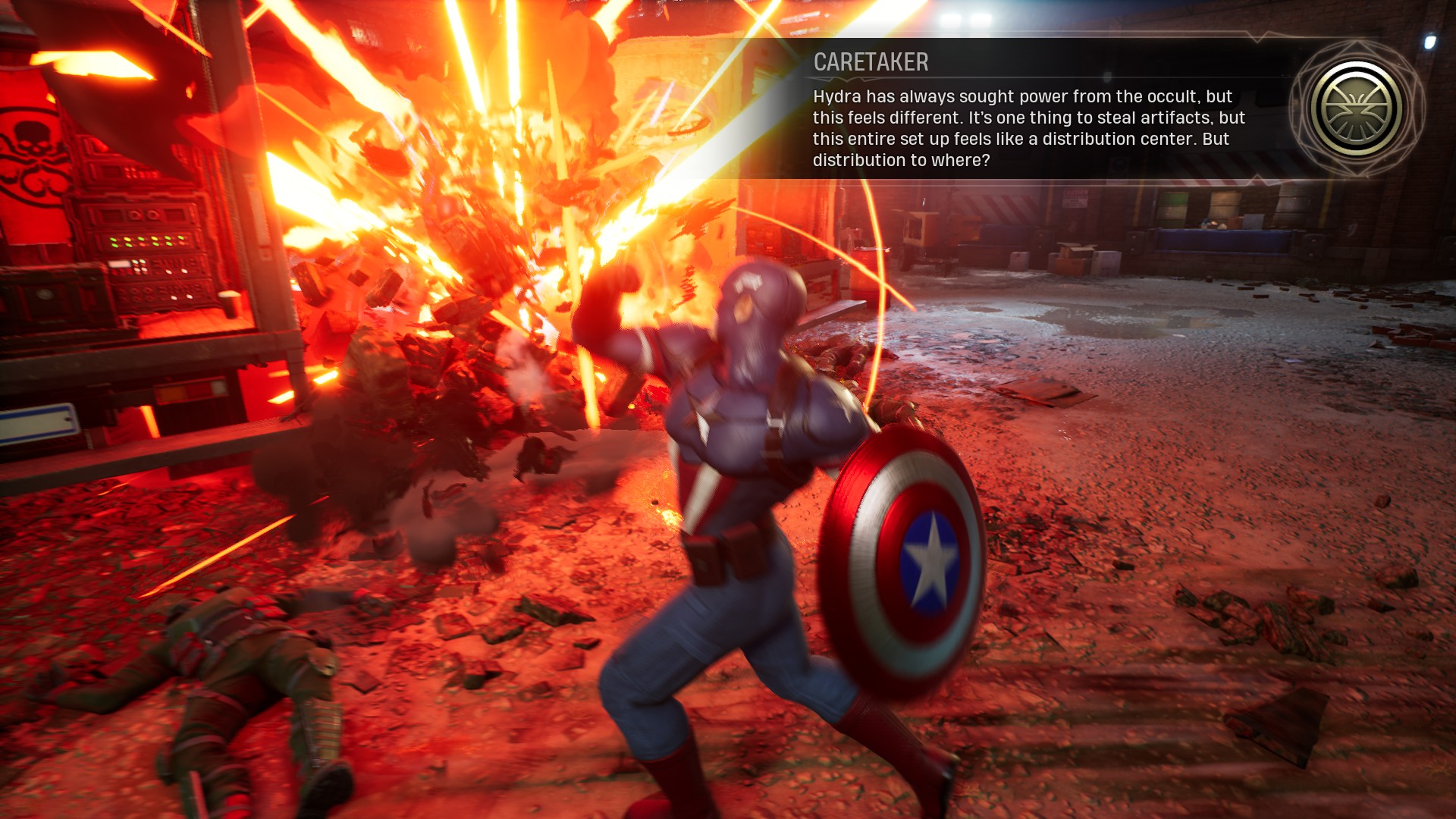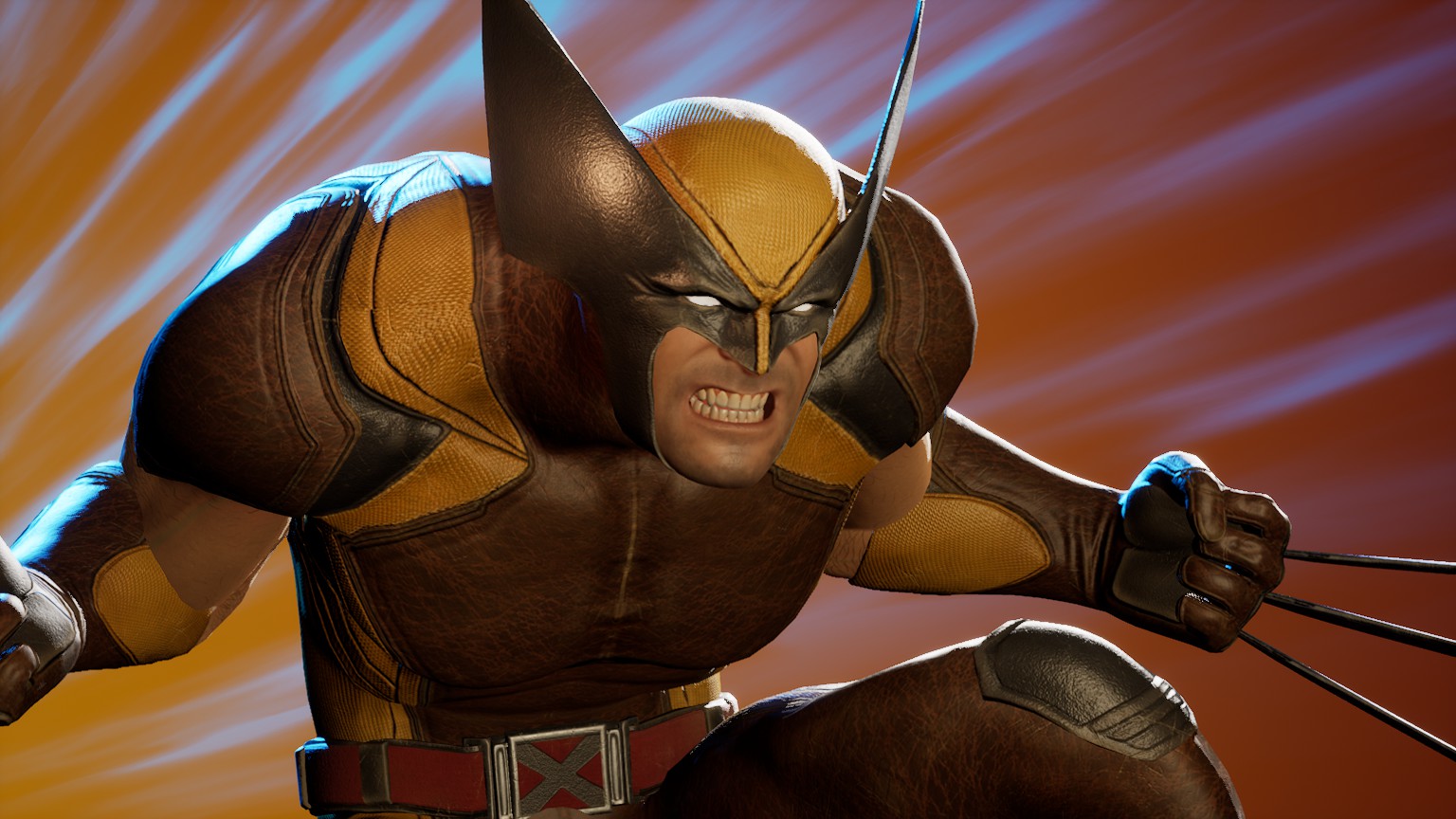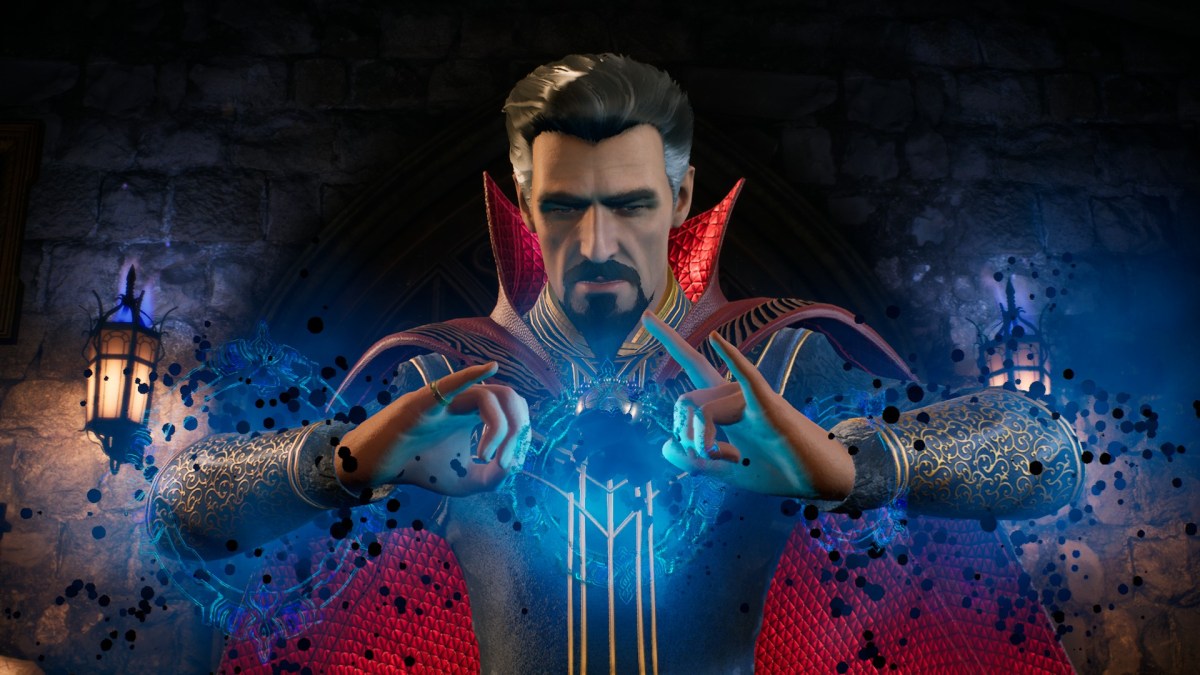When I began playing Marvel’s Midnight Suns, I was eager for some hot superhero team-up action. The trailers promised a star-studded line-up of Marvel’s top heroes, with unlikely combinations of characters tossed into the mix against an unstoppable demonic adversary. With a full suite of comics-accurate powers, environments crammed with destructible props, and the potential to upgrade the already powerful heroes into all-conquering gods, I was fully hyped to bring the pain.
But, about an hour in, I found myself taking Blade fishing. Yup, the moody and tortured Daywalker was in need of some emotional support and I was there to help pick up the pieces. Having found a picturesque riverbank, Blade and I spent a happy afternoon catching carp and nattering about his life as an immortal vampire hunter. Later on, I realized Spider-Man was having trouble fitting in with the other heroes and decided he’d probably love to come out to the woods and paint a pretty picture with me. Don’t worry Spidey, we don’t make mistakes, we just have happy accidents.
This is the bizarre reality of Midnight Suns, a game that’s as much about clobbering bad guys as it is about making friends, being a good listener, and finding the perfect gift to bring some light into a tired hero’s life.
Set in a fresh but familiar Marvel universe that takes equal cues from the comics and the MCU, you play as The Hunter, a fully customizable hero who’s the key to defeating the big bad Lilith. The game opens with her wreaking havoc on the world, with Tony Stark and Doctor Strange forming an awkward and unlikely alliance in an effort to stop her.

Key to this is Marvel’s premiere occult squad dubbed ‘The Midnight Suns’, here composed of Ghost Rider (the Robbie Reyes version), Magik, Nico, and Blade. They’ve set up shop in ‘The Abbey,’ located in a magic-proof pocket dimension in rural Massachusetts. You’re revived from your ancient slumber and begin fighting back against Lilith, which eventually sucks in various other Avengers, X-Men, and Marvel luminaries to your team.
In the present day at least, Firaxis made its name with the XCOM series, and its design structure can be found all throughout Midnight Suns. You spend half your time in the Abbey preparing for battle and the other in the field on various missions. Combat is turn-based, with your moves governed by customizable decks of cards for each hero, some of which can only be used if you’ve built up your heroism meter. For example, you might see Blade fill the bar by dispatching a series of minor mooks, and in turn, unleash a screen-clearing photon beam from Captain Marvel.
Strategic turn-based combat isn’t for everyone, but Firaxis has poured an inordinate amount of effort into making this as kinetic and fast-moving as possible. Each card has a bespoke animation, with impacts marked by eye-catching explosions and a satisfying Street Fighter II-sounding “K.O.” when you dispatch any enemy. Earlier missions only task you with wiping out every baddie on the map, but by the mid-way point, you’ll be tactically playing your way through boss battles that require forward-thinking, smart use of buffs and status effects, and conserving heroism for when you need it most.

It’s also obvious that Firaxis has a deep and abiding passion for all things Marvel. There are Easter Eggs and references everywhere, and it’s a quiet thrill to see a fully cohesive Marvel universe where the X-Men can rub shoulders with both the Avengers and Spider-Man villains without pesky rights issues getting in the way. That extends to the ludicrous amount of dialogue available with each hero, all of whom have custom dialogue for each ‘hangout,’ come to you with various problems, and move and fight very differently. Voice-acting is similarly impressive, with highlights such as Yuri Lowenthal’s Spider-Man/Peter Parker and Michael Jai White’s Blade.
This impeccable characterization is also present in the moment-to-moment gameplay. Iron Man is arrogant and likes to be the center of attention, with his deck reflecting this by allowing him to rapidly build and spend heroism with flashy moves. Meanwhile, street-level hero Spider-Man excels at environmental attacks and consumes fewer resources at the expense of lower overall strength. Captain America is appropriately focused on the well-being of his team, being able to quickly build up a protective barrier and divert enemy attention towards him and away from squishier characters. Each hero has their individual quirks and, even if you’re a Marvel novice, these battle traits are then reflected back at you when you’re hanging out with them back at the base.
But, at least currently, there are few flies in the ointment. In battle, Midnight Suns features plenty of fancy particle effects, and when combined with the zoomed-out perspective, smooth over some of the graphical deficiencies. However, back at HQ, when you’re face-to-face with them, it’s clear some of these character models could have used a bit more work. Character textures are reminiscent of a PlayStation 3-era game, with limited facial animation and some painfully generic designs. More specifically, Tony Stark and Peter Parker look like random NPCs plucked off the streets of an open-world game, which looks odd when they’re next to more expressive and detailed characters like Doctor Strange and Nico.

Beyond that, being able to freely explore the Abbey and its grounds in the third-person is nice, but the environment is hardly detailed, and direct control of the character never quite feels right. Firaxis’ strengths are in crafting complex, intertwined gameplay systems and solid writing, not third-person movement and envelope-pushing graphical wizardry, but when Midnight Suns is put up against something like Marvel’s Spider-Man (which is already approaching five years old) it can look a generation behind.
It’s also worth noting that the opening hour doesn’t put its best foot forward. There are a ton of long-winded tutorials one after the other, with each one featuring a tide of new jargon. I can’t help but feel that in this case, it would have been better for the devs to simply let the player, you know, play the game, at which point concepts like building heroism, player positioning, and upgrading abilities become easy to understand.
Beyond that, there’s a smattering of small bugs, stutters, and soft locks that encouraged me to keep a rolling save file so that I didn’t lose progress. Since the game’s release, there’s been a whopping 25 GB(!) patch, but judging from initial impressions online, that introduced as many problems as it squashed. Midnight Suns is perfectly playable and very enjoyable as-is, though if you want a truly smooth and hassle-free experience, it might be best to wait a few weeks for these launch bugs to be ironed out.
Despite those gripes, I had so much fun with Midnight Suns that I hate to criticize it too much. This is a deeply satisfying strategy action game that’s had a ridiculous amount of love and personality poured into it. I’ve been itching to get back to it whenever I wasn’t playing, and I’m sorely tempted to crank up the difficulty for another round.
This review is based on the PC version of the game. A copy was provided to us by 2K Games.







